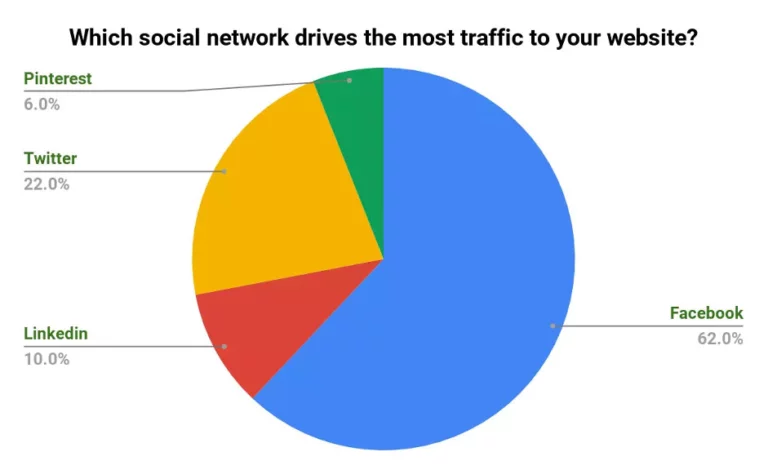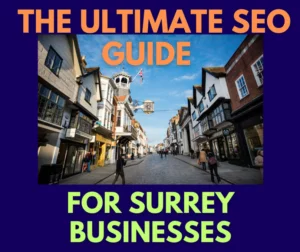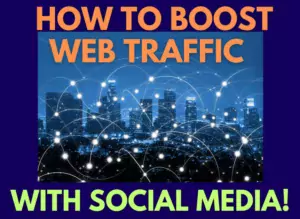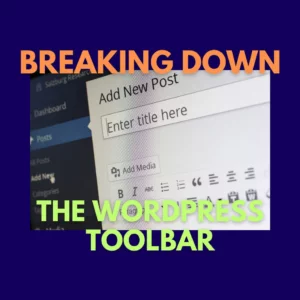10 Proven Strategies to Boost Website Traffic from Social Media
Using social media platforms to increase traffic to your website is so important and similar to running SEO content for your website.
Content and incoming external referral traffic is a heartbeat sign to Google that you are investing in your website and embracing the social media algorithm.
You will have heard of the omnichannel approach to marketing and using social media to increase website traffic is the place to start.
Get to know and be a near expert in each field before you move on to the next platform.
However, let’s explore these strategies in depth and understand the nuances that can significantly enhance your social media referral metrics.
1. Start with the Basics: Increase Reach and Engagement
To amplify your website traffic, the foundation lies in increasing your social media reach and engagement.
Engagement-centric content, maybe such as engaging memes, not only garners attention but also establishes a connection with your audience.
Timely, visually appealing posts coupled with active interactions with followers create a vibrant online presence, fostering brand familiarity and trust.
A study conducted by Social Media Today in 2022 demonstrated a remarkable 12% increase in website sessions and a 16% increase in website users from social media, emphasising the impact of engaging content on website visits.
Our no1 tip is to get yourself in front of the camera and post a video to drive engagement. You are unique and if you have something useful to say, then post it. Watch the likes and comments flood in,
2. Focus on Platforms that Drive Web Traffic
Choosing the right social media platforms is key to selecting the right avenue for your audience.
Facebook and Twitter have emerged as robust platforms for social media referrals, owing to their expansive user base and shareable content nature.
However, the dynamics differ across industries. You can’t simply say “I’m going for Instagram & TikTok”, your customer age or profession might not be there.
Your detailed analysis of social media platforms will underline the significance of understanding industry-specific trends and ensuring the strategic allocation of resources on platforms that yield the best results.
Here is our research on the demographics per social media platform that can increase website traffic. These activities are great for websites to stop the ranking freeze.
Quick List of Social Media Platform Demographics:

- Facebook: the most popular for referral traffic
- Age: Widely used across all age groups, with a significant user base in the 25-34 and 35-44 age brackets.
- Gender: Nearly an equal distribution of male and female users.
- Interests: Varied interests due to its diverse user base.
- Geographical Location: Predominantly used globally.

- Instagram:
- Age: Skewed towards younger demographics, particularly users between 18 and 29 years old.
- Gender: Slightly more female users than male users.
- Interests: Focused on visual content, lifestyle, fashion, travel, and creative arts.
- Geographical Location: Urban areas, popular in North America, Europe, and Asia.

- Twitter:
- Age: Broad user base, with a higher percentage of users aged 18-29.
- Gender: Nearly equal distribution between male and female users.
- Interests: News, trending topics, tech discussions, politics, and networking.
- Geographical Location: Global, popular in the United States, Europe, and Asia.

- LinkedIn:
- Age: Primarily used by professionals and older adults, with a higher concentration in the 30-49 age group.
- Gender: Nearly equal distribution between male and female users.
- Interests: Business networking, industry-related discussions, job searches, and professional development.
- Geographical Location: Worldwide, popular in North America, Europe, and Asia.

5. Pinterest:
- Age: Predominantly used by women, with a significant user base in the 18-49 age group.
- Gender: The majority of users are female.
- Interests: DIY projects, home decor, fashion, recipes, and travel.
- Geographical Location: Popular in North America, Western Europe, and Australia.
.

- Snapchat:
- Age: Primarily used by younger demographics, especially users aged 18-24. Although lets face it, most 12+year olds use it widely,
- Gender: Nearly equal distribution between male and female users.
- Interests: Real-time communication, visual stories, short videos, and filters.
- Geographical Location: Predominantly used in North America and Europe.

7. TikTok:
- Age: Popular among teenagers and young adults, with a large user base aged 16-24.
- Gender: Nearly equal distribution between male and female users.
- Interests: Short-form videos, creative content, challenges, and trends.
- Geographical Location: Global, with significant popularity in the United States, Europe, and Asia.
.
It’s important to note that these demographics can change over time due to platform updates, changes in user behaviour, and emerging trends.
Brand marketers and any Surrey social media agency should conduct regular market research to stay updated on the latest demographics and tailor their strategies accordingly.
Below is pie chart from search engine journal, to show where the majority of social media referral traffic comes from. This takes into account All industries / All markets, so this is a broad brush view.

3. Include Referral Links on Your Social Media Profiles
Your social media profiles serve as digital gateways to your website. Integrating direct referral links strategically within your bios or about sections offers a seamless path for interested users to arrive and explore your website.
Each social media post has the potential to steer traffic to your website. Writing compelling call-to-actions (CTAs) coupled with strategically placed clickable links transforms passive scrolling into active engagement.
Platforms like Instagram Stories, Twitter tweets, LinkedIn, and Facebook captions provide unique avenues to embed links, enabling users to transition effortlessly from social media content to your website.
Lets explore the basics of how referral links on social media platforms can increase website traffic whilst improving your profile on each.
Facebook:
- About Section: In your Facebook Page’s About section, you can add a referral link leading to your website, online shop, or a specific product/service page.
- Posts: When sharing updates or posts, you can include referral links to relevant content. For instance, a business promoting a sale might include a link to the sale page
- Bio Section: In your Instagram bio, you can include a referral link to your website, blog, online store, or any specific landing page. For example, a fashion blogger might have a referral link pointing to their latest blog post or a product they are promoting.
- Instagram Stories: If you have 10,000 or more followers, you can use the “Swipe Up” feature in Instagram Stories, allowing you to share direct referral links. For instance, an influencer promoting a product might include a swipe-up link to the product page.

Twitter:
- Profile Bio: Similar to Instagram, you can include a referral link in your Twitter bio. This link can lead to your website, online portfolio, or any other relevant destination.
- Tweets: You can share referral links directly in your tweets. For instance, if you’re sharing an article, you can include the article’s URL as a referral link.
LinkedIn:
- Profile Summary: In your LinkedIn profile summary, you can include a referral link to your portfolio, personal blog, or professional website.
- LinkedIn Posts: When sharing industry-related articles or updates, include referral links to the source material or relevant external content.
These examples demonstrate how referral links can be strategically incorporated into your social media profiles and posts.
These direct audiences to specific service pages or landing pages for online shops.
Always ensure that your referral links are accurate, relevant, and lead to high-quality, valuable content which converts.
4. Add Links to your Social Media Posts to Increase Website Traffic.
In addition to your profile, every social media post can be turned into an opportunity to drive traffic to your website.
If a user is interested enough to be reading and viewing your content already, make sure to let them know where they can see more while you have their attention.
End your post with a CTA (call to action) and a link to where they can get more info.
Each platform gives you the opportunity to add a link to your post.
But they do it in different ways. So, let’s review some of the options to add links in your social media posts.
Instagram:
You can create link stickers in your Instagram Stories. And while you can’t add clickable links to your feed posts and Reels (unless you link to your Instagram shop with product tags), you can encourage your followers to go to the link in your bio to see more. Check our our guide to Increase Instagram Followers for extra info.
Twitter:
Adding links in your tweets will create an automated link preview. Be sure to also make use of Twitter carousels and cards: these include one or multiple images which, when clicked, redirect the user to an external webpage or app download page.
LinkedIn:
You can put the link directly in the caption, which will automatically generate a link preview with a clickable image. You can then delete the link from the caption, leaving only the link preview, to keep your posts neat and tidy.
Facebook:
The same function present on LinkedIn can also be found here. In addition, you can include links in your Facebook Stories.
Snapchat:
Stories here are also an easy way to share a link with your followers.
TikTok:
Unless you pay for ads, you cannot add clickable links to your videos. The only possibility is to put a link in your bio and redirect people there.
5. Review Your Post Frequency Strategy
Navigating social media algorithms demands a wizard-like approach.
However, tailoring your posting frequency to match platform-specific algorithms is pivotal to increasing website traffic.
Twitter’s dynamic nature allows for multiple daily high-quality posts, ensuring consistent visibility.
Conversely, platforms like Facebook and Instagram benefit from a selective, curated approach, emphasising quality over quantity.
The Head of Social Media at The Economist, Kevin Young, advocates a tailored strategy, emphasizing conversation-based interactions on LinkedIn, and amplifying social media referrals while maintaining posting frequency at optimal levels.
Determining the best post frequency on social media can be complex and depends on various factors such as the platform you’re using, your target audience, the type of content you create, and your overall social media strategy.
There isn’t a one-size-fits-all answer, as what works for one business or individual might not work for another. However, we provide general guidelines for several popular social media platforms based on our experience with Surrey businesses in the UK.
Facebook:
- Recommended Frequency: 1-3 posts per day.
- Why: Facebook’s algorithm prioritises content from family, friends, and posts that spark conversations. Posting once or twice a day ensures consistent visibility without overwhelming your audience.
Twitter:
- Recommended Frequency: Multiple tweets per day.
- Why: Twitter is fast-paced, and tweets have a shorter lifespan compared to other platforms. Posting frequently, even several times a day, can help you reach different segments of your audience. However, be mindful not to overdo it, as too many tweets in a short time can be perceived as spammy.
Instagram:
- Recommended Frequency: 1-2 posts per day.
- Why: The Instagram marketing algorithm prioritises fresh and engaging content. Posting once a day or a couple of times a week ensures your posts have a chance to be seen by your followers. Instagram Stories can be more frequent and less polished, providing a behind-the-scenes look at your content.
LinkedIn:
- Recommended Frequency: 2-5 posts per week.
- Why: LinkedIn is a professional platform, and quality often trumps quantity. Focus on sharing insightful content, industry news, and thought leadership pieces. Consistent posting throughout the week maintains your presence without overwhelming your connections.
Pinterest:
- Recommended Frequency: 5-30 pins per day.
- Why: Pinterest content has a longer shelf life compared to other platforms. Consistent pinning, especially during peak hours, can increase your visibility. Utilise tools like Tailwind to schedule pins strategically throughout the day.
TikTok:
- Recommended Frequency: 1-3 posts per day.
- Why: TikTok’s algorithm rewards consistent content creation. Posting at least once a day, ideally multiple times, can help your videos gain traction and visibility among the platform’s diverse user base.
YouTube:
- Recommended Frequency: 1-3 videos per week.
- Why: Quality matters on YouTube. Focus on creating well-edited, engaging videos rather than overwhelming your audience with daily uploads. Consistency in your posting schedule (e.g., every Monday and Thursday) helps viewers know when to expect new content.
Remember, these are general recommendations, and it’s crucial to monitor your analytics.
Pay attention to engagement metrics, follower growth, and audience feedback.
Adjust your posting frequency based on what works best for your audience and the platform’s algorithms.
Quality, relevance, and consistency should be your guiding principles in determining your optimal post frequency on social media.
6. Share Links in Social Media Groups
Harnessing the power of social media groups amplifies targeted outreach.
Platforms like Facebook, WhatsApp, and LinkedIn offer group features, serving as conduits for shared interests.
Participating actively and sharing valuable content within these groups cultivates an engaged audience predisposed to exploring external links, thereby enhancing social media referral traffic to your website.
7. Use Content Techniques to Encourage Click-Throughs
Strategic content presentation is the linchpin for driving social media traffic to your website.
Captivating visuals and evocative captions serve as gateways to deeper engagement. Examples such as high quality videos, Infographics and interactive content (polls, quizzes).
Employing hooks that intrigue, appeals to FOMO (Fear of Missing Out), tugs at emotions, or integrates compelling CTAs entices users to delve further. Examples such as limited time offers, exclusive deals.
Research indicating a 2.3% increase in click-through rates with negative language underscores the significance of crafting impactful messaging.
8. Increase Web Traffic through Social Media Shares
Leveraging the social circle’s influence fosters exponential growth in website traffic.
Content designed for shareability, encapsulating striking imagery and thought-provoking topics, instigates natural sharing.
Encouraging followers to share content not only expands reach but also garners credibility through peer recommendations, amplifying social media referrals organically.
9. Collaborate with Influencers and Partners to boost website traffic
Another way to increase traffic to your website with social media, is the use of influencers – who wield considerable influence!
Partnering with influencers or businesses within your niche unlocks new avenues.
Their endorsement lends credibility, driving their followers to explore your website.
Influencer marketing for strategic collaborations enhance social media referrals, establishing your brand in an expansive digital landscape.
10. Analyse, Adapt, and Innovate
Routinely analysing your social media metrics is so important, that why our marketing agency in Surrey gets hired.
Data-driven insights unveil your target market user behaviour, helping you to evolve strategies.
Platforms do evolve, introducing innovative features and algorithms, which need gentle responses.
Embracing innovation through experimenting with emerging content formats, trending hashtags, and interactive features sustains user engagement, translating into consistent social media referrals to your website.
By embracing these strategies with a good understanding of their intricacies, you can transform social media from a mere platform to a potent vehicle driving substantial traffic to your website for more leads.
Implementing these techniques not only augments website visits but also fortifies your online presence, propelling your brand into the digital spotlight.
Stay vigilant, adapt to changing landscapes, and watch as your website traffic flourishes, driven by the power of social media engagement.









